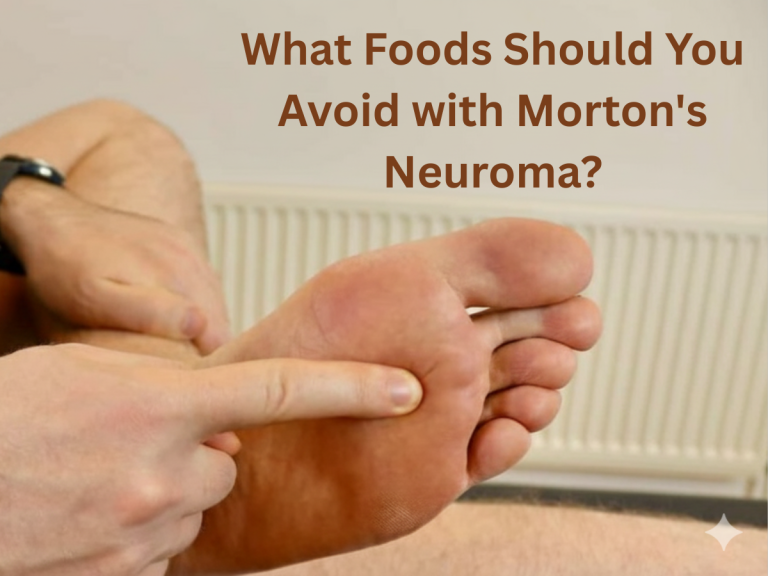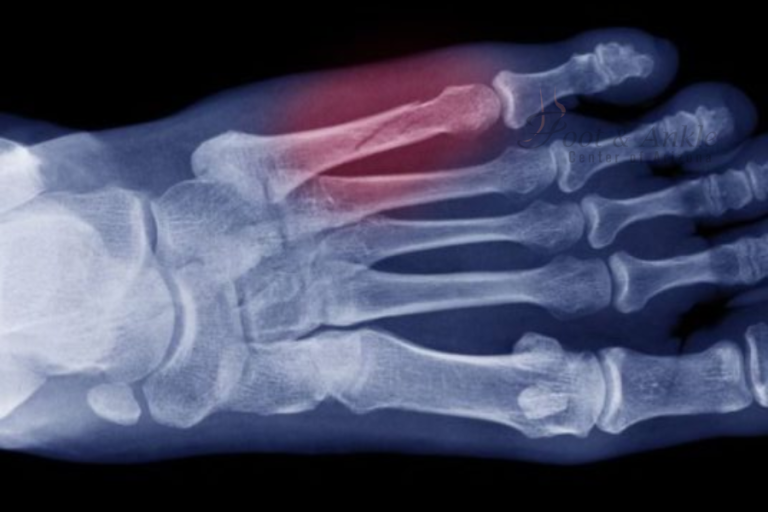Pain on the side of your leg is aggravating and makes your daily life hard to get through. Be it a dull ache or sharp pain, one wonders, “Why Do I Have Pain on the Side of My Foot?” Causes can range from simple things, like wrong shoes to serious problems, such as fractures or tendon injuries. In the given article, we are going to discuss some of the everyday causes of leg pains and ways of handling them.
Common Causes of Pain on the Side of the Foot
1. Ankle Sprains and Strains
Sprains or lines are some of the unconventional reasons one may always wonder, “Why do I even have an ache at the side of my foot?” A sprain of the ankle occurs when the ligaments that support the ankle joint are stretched or torn, usually from a sudden twist or turn. This may cause aches along the side of the foot, accompanied by swelling, bruising, and problems with the foot.
2. Stress Fractures
Stress fractures are hairline cracks in the interior of the bone due to overuse or repetitive forces. Mainly, these kinds of fractures occur in athletes and people who take part in extreme sports. When these kinds of fractures occur within the metatarsals or any other bones found on the side of the foot, they may cause generalized pain, tenderness, and swelling.
3. Peroneal Tendonitis
The peroneal tendons run down the outside of the ankle and the foot and are very crucial in the stabilization of the ankle and the foot. Overuse or repetitive force applied to those tendons may cause peroneal tendonitis, characterized by irritation, pain in the side of the foot, and problems moving the ankle.
4. Bunions
A bunion is a bony projection developed at the base of the great toe, often causing this toe to point toward the other feet. Although bunions are commonly associated with pain on the plantar surface of the great toe, bunions also can be responsible for lateral foot irritation related to alterations and stress changes from the mechanics out to the side of the foot.
5. Cuboid Syndrome
The cuboid bone, which is on the lateral side of the foot, partially dislocates or subluxates in the condition cuboid syndrome. It can be caused by overuse, trauma, or ankle sprain. Patients with cuboid syndrome commonly have pain in the lateral side of the foot and difficulty walking; tenderness along the lateral border of the foot is also present.
6. Arthritis
Arthritis, especially osteoarthritis, and rheumatoid arthritis may affect any joint inside the body, including those in the feet. Arthritis of the joints of the foot may cause pain on the aspect of the foot, stiffness, swelling, and loss of range of motion. As time goes on, the condition may become worse, and walking and other actions may become increasingly more difficult to do.
7. Tarsal Coalition
The tarsal coalition involves the fusion of two or more tarsal bones in the foot, a congenital condition. The abnormal connection may result in stiffness, limited mobility of the foot, and pains at the side of the foot. The condition usually becomes symptomatic in childhood, but it may also present during adulthood.
Symptoms Associated with Side Foot Pain
When one wonders, “Why do I have pain at the facet of my foot?” it is important to note the associated signs and symptoms because these may provide some clue as to the underlying cause. Common signs that accompany lateral side foot pain:
Swelling and bruising:
This is more often a sign of injury that has some spraining, pressure, or fracture component.
Tenderness:
Localized tenderness on the side of the foot may be a contributor to conditions such as strain fractures or peroneal tendonitis.
Stiffness and Decreased Mobility:
These are commonly caused by arthritis or tarsal coalition.
Numbness or Tingling:
This may also speak for nerve involvement or compression, commonly seen in conditions such as cuboid syndrome.
Apparent Deformities:
Bunions or other structural deformities may cause significant changes on the inside concerning the shape of the foot.
Diagnosis and Treatment Options
Diagnosis is critical to help you find out the cause of facet pain in your foot. A physician would typically perform a physical examination and obtain appropriate history, order necessary imaging with X-rays, MRIs, or CT scans to diagnose the correct cause of your pain.
1. Rest and Ice
Initial treatment for most minor injuries and overuse cases is rest and ice. The rest of the involved foot, along with the application of ice packs, can reduce infection and pain. Sports that aggravate the pain should be avoided to recover.
2. Exercise
Physical therapy may be astonishingly effective in treating aching feet. The physical therapist will lead you through exercises that strengthen the foot and ankle, increase flexibility, and decrease pain. Conditions that greatly benefit from physical therapy include peroneal tendonitis, ankle sprains, and cuboid syndrome.
3. Orthotic Devices
Custom orthotic inserts or supportive shoes can alleviate pain as they may provide a more sufficient arch guide, and cushioning, and distribute weight-bearing pressure more efficiently. Orthotics commonly accompany the treatment of other conditions, including bunions, arthritis, and tarsal coalition.
4. Medications
Nonsteroidal anti-inflammatory pills or NSAIDs like ibuprofen may be used to minimize pain and inflammation associated with foot injuries and arthritis. Corticosteroid injections can be an option in some cases to treat symptoms for a longer period.
- Surgery
Surgical intervention may be necessary for grave cases or when other conservative remedies fail to offer a solution. Surgical options depend on the cause and include repair of torn ligaments, realignment of bones, and removal of bone growths.
Prevention of Foot Pain
The prevention of foot pains requires an individual to be in active pursuit of keeping the feet healthy. Here are some tips that will help you avoid asking, “Why do I even have pain in the aspect of my foot?” in years to come:
Wear proper footwear:
Use shoes that offer proper support and adequate fit and to suit the purpose. Avoid high-heeled shoes or shoes with too little arch support when being worn long enough.
Gradually Increase Activity Levels:
If you are starting an all-new exercise routine or sport, increase your activity levels gradually to avoid overuse injuries.
Maintain a Healthy Weight:
Excess weight puts additional pressure on your toes, raising the risk of pain and injury.
Strengthen Your Feet and Ankles:
Including regular exercises that are devoted to the muscles of the feet and ankles in your daily routine will go a long way in enhancing balance and preventing injuries.
Practice Good Foot Hygiene:
Keep your feet clean and dry to protect you from infections and other foot disorders. Always keep your toenails trimmed and inspect your toes for abnormalities of any kind.
Conclusion
At the Foot and Ankle Center of Arizona, our approach to foot pains is both professional and knowledgeable. With extended experience in Scottsdale, AZ, we offer customized solutions tailored according to your desires. From accurate prognosis to complete remedy options, which also include rest, remedy, orthotics, medicinal drugs, or surgical operation if required, we keep your good health in mind first. Furthermore, we focus not only on the treatment but also on prevention to maintain good health of feet and avoid pain in the future. Let’s help you with foot comfort and appropriate care to not allow foot pain to hold you back.




